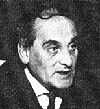News Archive
1996 |
1997 |
1998 |
1999 |
2000 |
2001 |
2002 |
2003
2004 | 2005 | 2006 | 2007 | 2008 | 2009 | 2010 | 2011
2012 | 2013 | 2014 | 2015
2004 | 2005 | 2006 | 2007 | 2008 | 2009 | 2010 | 2011
2012 | 2013 | 2014 | 2015
![]()
Welcome to our archive of past news articles.
You will find previous articles listed below
from most the recent back to our first articles in 1996.
1996
 |
First All-Sky Maps of the ROSAT Soft X-ray Diffuse Background Survey [2 Dec 1996] - The first all-sky maps from the ROSAT survey of the diffuse X-ray background have been released by the Max Planck Institute for Extraterrestrial Physics in Garching, Germany. |
 |
Launch Problem Thwarts New Missions [14 Nov 1996] - The November 4 launch of two new high energy astrophysics missions, SAC-B and HETE, ended in disappointment when the third stage of the launch vehicle failed to separate. The two spacecraft and the rocket stage remained locked in a position which prevented HETE's solar panels from opening, and kept SAC-B's solar panels from pointing properly at the Sun. Unable to generate power to communicate with the Earth, run their instruments and recharge their batteries, the spacecraft will not be able to fulfill their scientific missions. |
 |
The sky is no limit in the space program [28 Oct 1996] - By Hillary Rodham Clinton Reproduced from the 13 October 1996 Annapolis Capital When I was 14, I dreamed of becoming an astronaut. Inspired by Alan Shephard's
pioneering 15-minute trip into space, I wrote NASA to find out what I needed to
do to see the stars up close. The space agency thanked me for my interest
but said that women were not being considered for the job.
|
 |
Beppo -- the Satellite, the Science, and the Man [19 Sep 1996] - BeppoSAX is the first X-ray mission (and, of the coming near-future satellites, the only mission) which has the capability of observing sources over more than three decades of energy - from 0.1 to 200 keV - with a relatively large area, a good energy resolution, and imaging capabilities (resolution of about 1 arcminute) in the range of 0.1 - 10 keV. |
 |
Twinkle, twinkle (really fast!) little star! [12 Jul 1996] - The Rossi X-ray Timing Explorer (RXTE) has discovered neutron stars that emit streams of X-rays pulsing over 1,000 times a second. The pulses are not strictly periodic, but vary slightly from cycle to cycle. Astronomers call them "quasi-periodic oscillations (QPOs)". This just means that the pulses are almost, but not quite, periodic. |
 |
The Bursting Pulsar (GRO J1744-28) [10 Jun 1996] - The Bursting Pulsar was discovered in December 1995 by the Burst and Transient Source Experiment (BATSE) on the Compton Gamma-Ray Observatory. BATSE discovered energetic outbursts of high energy X-rays and low energy gamma-rays being emitted every few minutes from this object located near the galactic center. This object, which came to be known as the Bursting Pulsar, brightened to become the brightest X-ray source in the sky in February before steadily fading in April and May. |
 |
First X-rays From a Comet Discovered! [15 Apr 1996] - A team of U.S. and German astrophysicists have made the first ever detection of X-rays coming from a comet. Their discovery of a strong radiation signal -- about 100 times brighter than even the most optimistic predictions -- was made March 27, 1996, during observations of Comet Hyakutake using Germany's orbiting ROSAT satellite. |
1996 |
1997 |
1998 |
1999 |
2000 |
2001 |
2002 |
2003
2004 | 2005 | 2006 | 2007 | 2008 | 2009 | 2010 | 2011
2012 | 2013 | 2014 | 2015
2004 | 2005 | 2006 | 2007 | 2008 | 2009 | 2010 | 2011
2012 | 2013 | 2014 | 2015
Take Me to the News Page

